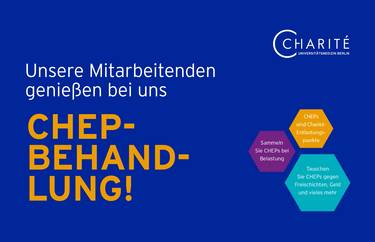To determine whether a shift is stressful, we always work with a staffing ratio or personnel allocation. This ratio refers to the respective shifts, wards, and their workload. If the fixed ratio of nursing professionals to patients is not correct, this is accompanied by an increased workload and the colleagues will then collect relief points. The labor agreement includes shift-specific staffing rules for all wards. The special regulations for executives are also noted there.
What does the Charité labor agreement offer? In this video, you will learn what the contract is about and how you can benefit from it as a healthcare professional.
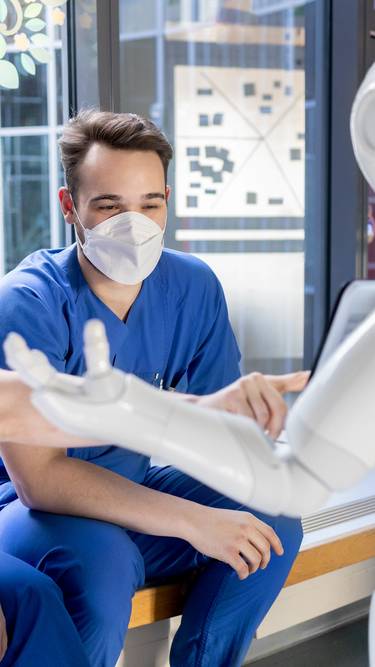
Relief in nursing professions?That is where CHEP comes in!
Benefits in a nutshellNot only nursing, but all health care professions will benefit from our new labor agreement starting at the beginning of 2022. This page will provide you with more information on the labor agreement, what the Charité relief points (CHarité EntlastungsPunkte – CHEPs) are all about, and why the new regulations are so important – for you, for us, and for our patients.
I want to read the agreement paper (PDF)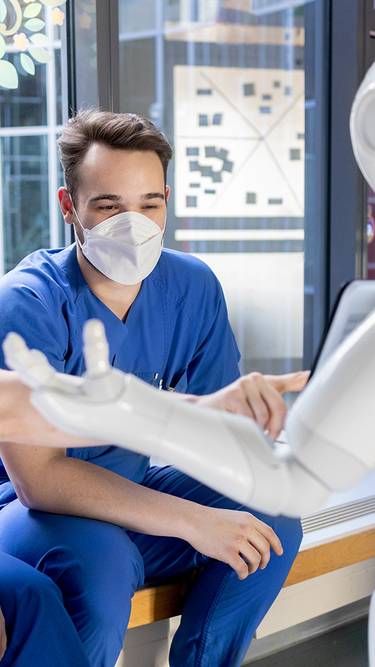
Relief in nursing professions?
That is where CHEP comes in!
Not only nursing, but all health care professions will benefit from our new labor agreement starting at the beginning of 2022. This page will provide you with more information on the labor agreement, what the Charité relief points (CHarité EntlastungsPunkte – CHEPs) are all about, and why the new regulations are so important – for you, for us, and for our patients.
I want to go straight to the labor agreement! (German, PDF)Why everybody benefits from the new labor agreement!
Our society depends on the health professions. These days more so than ever. However, it is a challenge to attract enough people to the all-important health professions – at least under the current working conditions. This leads to understaffed shifts and makes work on the wards even more strenuous.
Breaking this pattern, retaining employees in the long term, and also providing patients with the best possible experience in what is usually already a difficult situation, requires change. Together with the united services union “ver.di” and many colleagues from health care professions, measures have been defined to permanently improve working conditions.
The new labor agreement for health care professions is designed to help bring fun back to the meaningful, varied, and indispensable health care professions. So that humanity is given priority again over routing handling. And so that people no longer talk about stress limits, but once again about dream jobs.
“The labor agreement and the CHEPs identify potential causes of stress on a shift-by-shift basis, and make it possible to take targeted countermeasures and offer employees compensation. In the end, this also benefits the patients.”
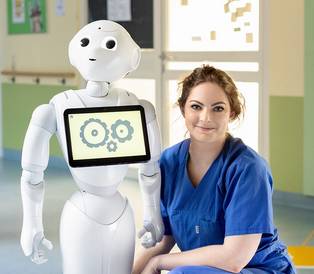
Working at Germany's best clinic? Try it out!
The innovations in a nutshell
Relief: Together instead of alone
In the future, those working stressful shifts will be credited with so-called CHEPs (Charité relief points). These CHEPs can be exchanged for time off, money, and much more.
Training: Nursing with a perspective
We have committed ourselves to new personnel development concepts in order to offer our health care professionals a career with perspective. Three new training wards and a new intensive care learning unit will make this career available to even more people. In addition, the supervisory relationship between our practical instructors and trainees is being improved and jobs are offered to our trainees after their second year of training and successful completion of their examinations.
You can find more information on our continuing education programs and benefits for employees here: pflege-in-berlin.charite.de/en/
Support: Keeping the work at the ward
Working with patients can be stressful. That is why psychosocial care is now offered at all intensive care units – for patients, but above all also for the nursing staff. Everybody can get dependable help to master difficult situations together.
“Psychosocial care provided by psychologists for intensive care units can provide fundamental and lasting relief for staff.”
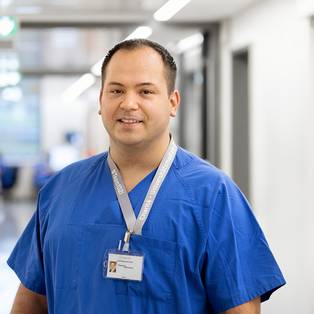
What is CHEP?
Effective immediately, our health care professionals will earn the new relief points when they provide services that do not meet a certain personnel allocation level or where violent situations occur.
FIVE stressful shifts = ONE CHEP = EIGHT-hour time value
This also applies in a similar way to the employees in housekeeping and supply services, including attendants for surgical positioning, colleagues of the nursing pool, and our health care profession trainees and students. The details for individual occupational groups vary and are broken down in the labor agreement. The fine print is on your side. See for yourself!
How does CHEP treatment work?
When is a shift “stressful”?
What can CHEPs be used for?
One CHEP is worth eight working hours and can be redeemed on a completely individual basis.*
1. Free shifts – All those working hard get to put their feet up
2. Sabbatical – Aloha, Namaste, or simply Howdy: Take longer paid time off
3. Partial retirement account – Supplementing salary and pension insurance contributions for later partial retirement
4. Charité PayPass – Make full use of the equivalent value of CHEPs with the PayPass (up to the tax-free limit of € 528/year)
5. Recreation allowance – Wellness, spa, or amusement park: put the equivalent of the CHEPs into recreation (up to € 156/year)
6. Child care subsidy – Tax and social security free payment of CHEPs for child care
CHEPs that are not redeemed will be paid out. The financial equivalent of one CHEP is measured by the respective salary.
* Not all measures are available yet. We are working on the implementation.
How are CHEPs recorded?
CHEPs are credited based on employee occupancy statistics and time tracking (duty rosters). Transparency has priority here: Data on shift-specific staffing will be made available for the representatives of the labor agreement parties and for the hospital staff council via dashboard. Employees can also track the number of CHEPs they have already collected.
Are there any other measures?
Yes! On the one hand, there are further measures in the training field, such as the assurance of a supervision ratio of 1:2 between practical instructors and trainees or students. On the other hand, nursing professionals will have the perspective option to voluntarily perform compensated stability services in order to avoid stressful situations at the wards.
Furthermore, the Charité is developing a concept to prevent violent situations. The measures from the labor agreement are to be accompanied scientifically in order to test their effectiveness.
When do the measures become effective?
CHEPs are already credited to our health professions colleagues. However, not all measures adopted in the labor agreement and all deployment options for CHEPs can be implemented as quickly. The labor agreement defines in more detail when which measures are to begin or how they will be addressed. We regularly inform our colleagues about the current status on the intranet.
